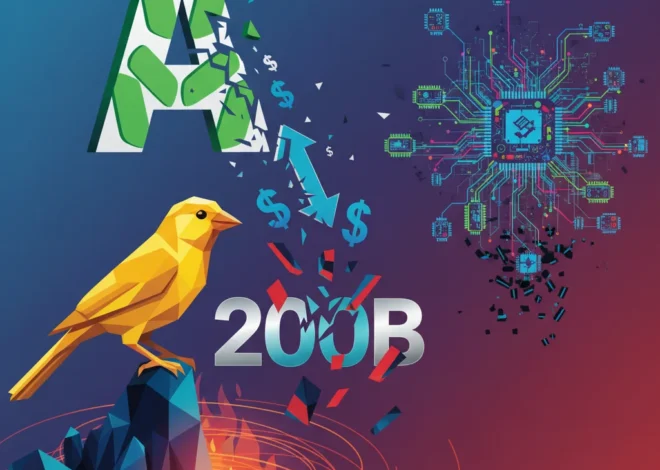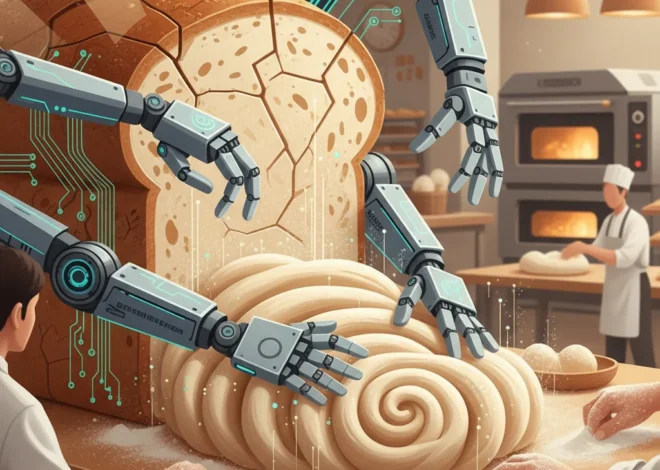
Vibe Coding: How a Dictionary’s Word of the Year is Redefining Software Development
The Future of Programming is a Feeling: “Vibe Coding” Takes Center Stage
Every year, dictionaries hold a mirror up to our culture, capturing the essence of our collective conversation in a single word or phrase. We’ve seen “rizz,” “goblin mode,” and “permacrisis” define recent years. But this year, Collins Dictionary has chosen a term that feels less like a fleeting meme and more like a seismic shift from the heart of the tech world: vibe coding.
So, what is it? According to the official announcement, “vibe coding” is the art of making an app by describing it to an artificial intelligence. Forget painstakingly writing thousands of lines of syntax-perfect code. The new paradigm is about articulating a vision, a “vibe,” and letting an AI handle the translation into functional software. It’s the ultimate abstraction of programming, moving from machine language to human language.
This isn’t just a quirky neologism; it’s a landmark moment. It signals that the power of artificial intelligence has moved beyond chatbots and image generators and is now fundamentally altering the very process of creation. For developers, entrepreneurs, and anyone involved in the tech industry, this isn’t just news—it’s a signpost pointing toward a radically different future for software development, automation, and digital innovation.
Deconstructing the “Vibe”: From Abstract Idea to Functional Code
To truly grasp the concept, let’s contrast it with traditional programming. For decades, building software required a deep, specialized knowledge of languages like Python, Java, or C++. A developer acted as a meticulous translator, converting a human idea into a set of rigid, logical instructions a computer could execute. A single misplaced semicolon could bring the entire system crashing down.
Vibe coding flips this on its head. The developer’s role shifts from a “code writer” to a “vision director.” The process looks something like this:
- The Prompt: Instead of opening a code editor, you open a chat interface with a powerful Large Language Model (LLM). You describe your goal in natural language. For example: “Build me a simple SaaS web app for project management. It needs user authentication, a dashboard to create and assign tasks with due dates, and a way to mark tasks as complete.”
- The Generation: The AI, trained on billions of lines of code from across the internet, interprets your “vibe.” It generates the necessary HTML, CSS, JavaScript, and backend logic, often choosing the appropriate frameworks and libraries.
- The Iteration: The first draft is rarely perfect. The real magic happens in the follow-up. “Okay, now add a feature for users to leave comments on tasks.” or “Change the color scheme to be more minimalist and professional, like Stripe’s website.” You refine and debug by continuing the conversation.
This conversational approach is powered by breakthroughs in generative AI and machine learning. It represents the culmination of a long journey toward making computers easier for humans to command, a journey that began with the first graphical user interfaces and evolved through the low-code/no-code movement.
The Day the Cloud Stood Still: Lessons from the Microsoft Outage That Silenced the Internet
More Than Just a Word: A Reflection of Our AI-Saturated World
The selection of “vibe coding” as word of the year wasn’t made in a vacuum. It topped a shortlist of terms that paint a vivid picture of our current technological and cultural landscape. As reported by Collins, this list highlights our ongoing integration with and reaction to rapidly advancing technology.
Here’s a look at some of the other contenders, which provide context for why “vibe coding” ultimately won out:
| Shortlisted Term | Definition & Significance |
|---|---|
| Generative | Relating to AI that can create new and original content. This is the foundational technology that makes vibe coding possible. |
| De-influencing | The practice of discouraging people from buying certain products. A cultural pushback against the hyper-commercialization of social media. |
| Canon event | An event that is essential to a person’s character or timeline. A term borrowed from pop culture (Spider-Man) that has entered mainstream use. |
| Digital nomad | A person who works remotely while travelling. This reflects the post-pandemic shift in work culture, heavily enabled by cloud technology and SaaS tools. |
While terms like “generative” describe the technology itself, “vibe coding” describes the human interaction with that technology. It captures the new, almost intuitive relationship we are forming with machines. According to Collins Dictionary’s official blog, the term represents a “significant leap” in how we approach problem-solving, making it a worthy symbol of the year’s progress.
The Ripple Effect: How Vibe Coding Will Transform the Tech Industry
The rise of vibe coding isn’t a niche trend for hobbyists. It has profound and immediate implications for the entire tech ecosystem, from solo entrepreneurs to enterprise-level corporations.
For Developers: The Augmented Programmer
The initial reaction from many developers might be fear of obsolescence. But history shows that tools that increase abstraction don’t eliminate programmers; they empower them to build bigger, more complex systems faster. Vibe coding is the ultimate productivity multiplier. It can:
- Eliminate Boilerplate: Automate the setup of new projects, writing of tests, and creation of standard UI components.
- Accelerate Learning: Help developers learn new languages or frameworks by asking the AI to generate examples and explain them.
- Focus on High-Level Problems: Free up mental bandwidth to focus on system architecture, scalability, and crucial cybersecurity considerations.
The developer’s role will become more strategic. They will be the ones who verify, secure, and optimize the AI’s output, acting as the essential human in the loop.
The Silver Tsunami Meets the AI Revolution: Uncovering the Biggest Tech Opportunity of Our Time
For Startups and Entrepreneurs: The Democratization of Innovation
This is perhaps the most revolutionary aspect. For years, a great idea was not enough. You needed a technical co-founder or significant funding to hire a development team. Vibe coding dramatically lowers that barrier to entry. Non-technical founders can now:
- Build MVPs (Minimum Viable Products) in Days, Not Months: Quickly create a functional prototype to test market fit and attract early users.
- Reduce Initial Burn Rate: Lower the immense upfront cost of custom software development, a major killer of early-stage startups.
- Foster Unprecedented Agility: Pivot and iterate on their product based on user feedback at a speed that was previously unimaginable.
This will lead to an explosion of innovation, as more diverse ideas can be brought to life without the traditional gatekeepers of technical expertise. The entire SaaS landscape could be reshaped by this new wave of creators. Studies on the impact of generative AI on productivity, like one from MIT, have already shown significant gains, and this is just the beginning.
Navigating the New Frontier: The Challenges and Caveats
With great power comes great responsibility, and the world of vibe coding is fraught with new challenges. Adopting this technology without a critical eye is a recipe for disaster. The most pressing concerns fall into three categories:
- Code Quality and Security: An AI’s primary goal is to fulfill the prompt, not necessarily to write the most efficient, scalable, or secure code. AI-generated code can contain subtle bugs, performance bottlenecks, or, most dangerously, severe cybersecurity vulnerabilities. As organizations like OWASP have highlighted, new attack vectors like prompt injection can trick an AI into writing malicious code. Human oversight is non-negotiable.
- Intellectual Property and Ownership: Who owns the code generated by an AI? Is it the user who wrote the prompt, the company that created the AI, or is it in the public domain because the AI was trained on open-source code? These are murky legal waters that have yet to be fully navigated.
- The “Black Box” Problem: When AI-generated code doesn’t work, debugging it can be a nightmare. It can be difficult to understand the AI’s “reasoning,” making it harder to fix than human-written code where the original intent is clearer.
These are not reasons to reject vibe coding, but they are reasons to approach it with a strategy. The future will likely involve a hybrid model: using AI for rapid scaffolding and development, with skilled human developers focusing on security audits, performance tuning, and architectural integrity.
Digital Dominoes: How One Microsoft Outage Revealed the Internet's Fragile Foundation
Conclusion: More Than a Vibe, It’s a Voice
The crowning of “vibe coding” as the word of the year is a cultural acknowledgment of a technical revolution. It marks the moment when creating software became less about speaking the language of machines and more about clearly expressing human intent. It’s a paradigm shift that will empower a new generation of creators, supercharge the productivity of existing developers, and accelerate the pace of innovation for startups and enterprises alike.
The journey ahead will require new skills, new workflows, and a new way of thinking about the partnership between humans and machines. The era of the programmer is not over; it is simply being upgraded. The future of technology will be built not just with lines of code, but with clear, creative, and compelling conversations. It’s time to find your voice, and your vibe.


